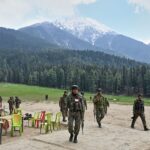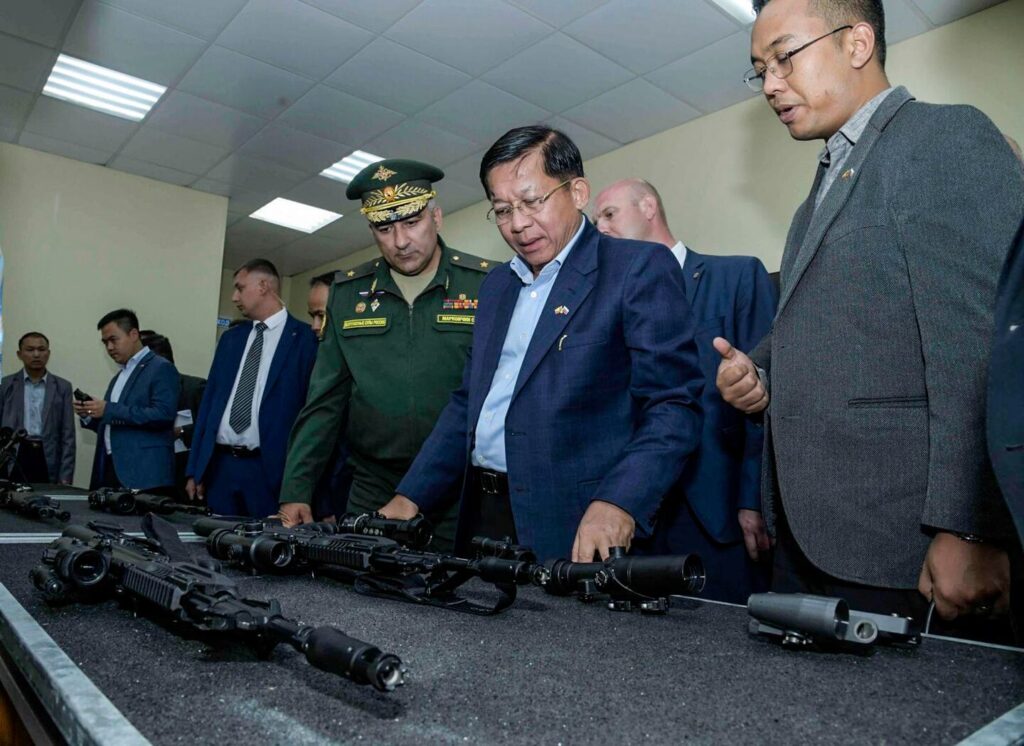MANTRAYA ANALYSIS #87: 29 APRIL 2025
BIBHU PRASAD ROUTRAY
Abstract
The terror attack in Pahalgam has shattered the narrative of normalcy in the Kashmir Valley. Low-scale terrorism, when treated with indifference, will always have the potency of striking back. To protect the hard-fought gains by the security forces, a consolidation policy needs to be put in place. Kashmiris must be at the centre of such a policy and not reduced to mere onlookers to a policy scripted afar.

Introduction
The terror attack on 22 April 2025 that killed 26 people in the popular tourist spot of Pahalgam in Anantnag district of Kashmir has come as a shock to many. New Delhi’s range of counter-measures has sought to target Pakistan, where the suspected terrorists are believed to have trained and planned the massacre. Ministers and security force authorities have promised to hunt down the perpetrators and mete out the harshest of punishments. The overall objective is to paint the heinous attack as an aberration to a prevailing sense of normalcy in the valley. The truth, however, is that Anantnag district in particular, and the Kashmir valley in general, despite reporting low-scale militant activities, have never been fully reclaimed and made terror-free. Therefore, the security establishment may have been short sighted in moving their attention completely to the Jammu region, which has seen a surge in militant activities since October 2021.
Treacherous Terrain: Taming the ‘Untamed’ Anantnag

A major part of the challenge posed by this district, spanning over 3,574 square-kilometres, is its rugged terrain, the beauty of which is what attracts visitors. Consisting of 1,283 square-kilometres of forest, the district has a mixed topography of steep mountains, deep valleys, and dense woods. It is one of the oldest districts of the Kashmir valley, which covered the entire south Kashmir before its bifurcation into Anantnag and Pulwama in 1979. In 2007, Anantnag and Pulwama were further subdivided into Kulgam and Shopian. At present, the districts of Pulwama, Shopiyan, and Kulgam are on the western borders of Anantnag. The district of Ganderbal and Kargil touch its northern boundary, and the district of Kishtwar is on its eastern boundary, whereas Doda district touches its southern boundary. The district of Ramban is in the southwest.
Baisaran valley meadow, where the attack took place, six kilometres from Pahalgam, is surrounded by the densely forested Pir Panjal mountains that stretch far, toward Kokernag and Kishtwar to the south and Balatal and Sonamarg to the north.
From a counter-terrorism perspective, the militants, well conversant with the terrain, have exploited it to their advantage. The terrain allows them to stay put in the forested areas for long or cross over to the neighbouring districts. Visibility in this forested cover is poor and is rarely beyond 100 metres. Without robust technical and human intelligence support, tracking down terrorists is extremely difficult. As a result, past encounters with fleeing and spotted terrorists have dragged on for several days and have not produced optimal results. Success in orchestrating such attacks and surviving clean-up operations may also have emboldened the terrorists to repeat their efforts periodically.
In September 2023, for instance, a joint operation, “Operation Garol,” by the Indian Army and J&K Police to flush out terrorists spotted in Gadool Forests in Kokernag, lasted for a week. The targets hid in a cave and exploited the height of a steep hill on a 80-degree slope. The operation, conducted at an altitude of 10,000 feet, which saw the deployment of hundreds of security force personnel and drones, ended with the death of four security personnel and two terrorists. “Chasing terrorists,” a highly glamourized narrative for people non-conversant with military procedures has claimed the lives of more than 50 Army personnel in the Poonch, Rajouri, Kathua, and Doda regions in recent years.
“Normalcy” in Anantnag versus Ground Reality
While New Delhi has tried to portray a picture of normalcy returning to Kashmir by citing reduced militancy, development work, and the increasing number of tourists, terrorism-related incidents reported since 2024 depicts a different picture. The district, especially its Kokernag and Pahalgam areas, has remained a focus of terrorist activities targeting civilians and security force personnel.
Interestingly, the 22 April incident in Pahalgam is not the first attack on tourists in the past one year. On 18 May 2024, terrorists shot at a tourist-laden minibus in the Yannar area of Pahalgam, injuring a tourist couple—Farah Khan and Tabrez Khan of Jaipur, Rajasthan. Tabrez received a gunshot wound to his eye and lost his eyesight. Ten days later, two militants responsible for the attack, identified as Waseem Ahmad Shah and Adnan Ahmad Beigh, were arrested. A pistol with a magazine and eight rounds, a grenade, and 120 AK rounds were recovered. In the second attack on outsiders in the district, on 17 April 2024, an unidentified militant shot dead a non-local vendor from Bihar, identified as Raja Shah, in the Bijbehara area.
The Resistance Front (TRF, also known as JK Fighters), the group that has claimed responsibility for the attack, is alleged by a number of sources to be in reality a front for Lashkar-e-Taiba (LeT). The TRF, the People’s Anti-Fascist Front (PAFF), and the Kashmir Tigers, all active in Anantnag district, appear to share this proxy nature. PAFF is believed to be a proxy outfit of the terror group Jaish-e-Mohammed and was banned by the Ministry of Home Affairs in January 2023. The Kashmir Tigers too are believed to be affiliated with the JeM. On 8 October 2024, unidentified militants but apparently PAFF, abducted Hilal Ahmad, a 26-year-old Territorial Army personnel from Shangus in Kokernag area. His body was recovered a day later during a search operation conducted by the Army personnel in Kazwan forest.
(Read the MISS Policy brief on TRF, HERE.)
Anantnag has not been alien to encounters between the security force personnel and the terrorists. On 2 November, the Indian Army’s J&K-based Chinar Corps launched Operation “Halkan Gali” and killed two terrorists—Zahid Ahmed Reshi and Arbaz Ahmed Mir—belonging to the PAFF in the Larnoo area. One US-made M-4 rifle and an AK rifle were recovered from the slain militants. Arbaz Ahmed Mir, who had crossed over to Pakistan, had returned to Kashmir in 2023. On 10 August, two Army personnel and one civilian were killed in an encounter in the Ahlan area of Kokernag. The army had launched the operation following inputs about the infiltration of militants from neighbouring Doda district. The terrorists managed to escape. Kashmir Tigers claimed responsibility for the attack and said, “The war will continue till the independence of Kashmir.”
On two occasions in 2024—17 April and 27 August – a total of five terrorist associates were arrested in the district with arms, ammunition, and explosives.
However, the incident that should have raised a red flag about militant activities in the district and an impending attack took place less than a month before the Pahalgam attack. On 24 March, a raid on a militant hideout in a forested area of the district had recovered 200 empty AK cartridges, two gas cylinders, a Chinese grenade, a night vision device, bedding, utensils, and food packets. The militants had fled before the raid took place.
Decline in Terrorism?
On 19 December 2024, the Home Minister, chairing a high-level security review meeting in New Delhi, declared that the “eco-system of terrorism in Jammu and Kashmir has almost ended” and “the goal of ‘Terror Free Jammu and Kashmir’” will be achieved “at the earliest.” Periodically, authorities have declared several districts of Jammu & Kashmir terror-free, citing a “significant decline in terrorist incidents, infiltration, and recruitment of youth in terrorist organisations.” While available data supports official claims, interpreting the fewer incidents as a lack of potency among the terrorists may be off-target. Terror-free categorization, a metric for the thinning of security force presence in those areas, and their relocation to terror-marred areas, may in reality have created pockets of survival for the terrorists. As the government has focused on the surge of terrorism in Rajouri and Poonch in recent years, the Kashmir valley remains a happy hunting ground for the terrorists, albeit at a lower level.
An official assessment in March 2025 estimated the number of foreign (read Pakistani) terrorists operating in the J&K at 60 (35 belonging to the LeT, 21 to JeM, and 4 to the Hizb-ul Mujahideen), down from 91 in 2024. The number of local recruits was cited as only 17, the lowest since 2019. The army and the Border Security Force (BSF) have repeatedly claimed “zero infiltration” from Pakistan. Overall, such assertions do not add up. India’s Comprehensive Integrated Border Management System (CIBMS) project remains a work in progress, with deadlines revised at least twice and now slated to be completed by December 2025. Infiltrations do continue. Once inside Indian terrain, tracking down a trained terrorist and neutraliziion is a challenge. Moreover, a constant feed keeps the terror pool functional and an attack like the one in Pahalgam is always a possibility.
The pathway to ending terrorism in Jammu & Kashmir, therefore, is complex and riddled with several obstacles. Diplomatic pressure on Pakistan has not been able to bring about a change in Pakistan’s behavior and is unlikely to do so. The key, therefore, is to invest in technology that overcomes the challenges posed by topography. Districts with declining terrorism need to be treated at par with those witnessing more frequent attacks as the counter insurgent conflates and inflates. Moreover, the missing component of human intelligence, needs to be built and sustained.. For that to happen, the conflict-fatigued Kashmiri civilians need to be embraced and protected from the jingoistic media, analysts, and self-appointed activists. The overwhelming reaction of common Kashmiris to the Pahalgam attack shows how much they value normalcy and growing tourism. This needs to be celebrated, so also their cultural sensitivities, which may have come under duress by New Delhi’s overzealous strategy to bring “normalcy” to Kashmir.
(Dr. Bibhu Prasad Routray is the Director of MISS. This analysis has been published as part of Mantraya’s ongoing “Fragility, Conflict and Peace Building”, and Mapping Terror & Insurgent Networks” projects. All Mantraya publications are peer-reviewed.)




